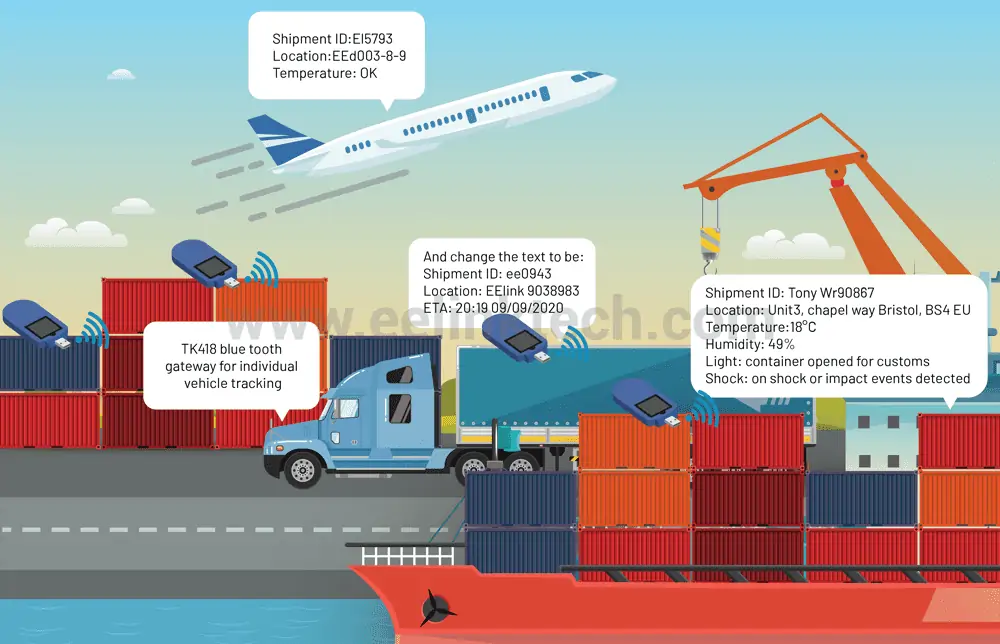How to use technology to improve efficiency throughout the supply chain?
In today’s fast-moving, technological world, getting the supply chain process right is vital to the success of a company. Consumers expect to be able to receive their products quicker than ever before; next-day delivery is commonplace and being able to track items from the factory floor to the customer’s hand is vital to a successful business model. The development of the Internet of Things (IoT) has also meant that point-to-point tracking has become a highly technological process, allowing businesses to monitor their products at the touch of a button using cloud-based software to track their processes from anywhere in the word.
What Is A Supply Chain?
This is where the idea of the supply chain comes in. A supply chain is the network between a company and its suppliers, designed and built to produce and distribute a product to the customer. The supply chain was developed to ensure that companies could reduce their costs and stay competitive in a very crowded market. Depending on the size of the company and their range of their products, a supply chain can consist of just a few suppliers or a vast range of different companies and services.
The supply chain also represents the physical steps required to get a product from manufacture to the final customer. It is this second description for which the advancements in technology can be utilised to their full potential, as it includes the transportation and transformation of raw materials into physical products, then the transportation and distribution of the products to the end-user. An efficient, optimised supply chain can not only fulfil customers’ orders quickly and correctly, it can, if managed properly, result in much lower costs and a faster production cycle, which anyone with a hint of business acumen would know leads to more profitability.
Why Is Supply Chain Management Important?
In supply chain management, nearly every product which appears on the market comes from the combined efforts of all the various organisations – the links in the chain. If any one of those links fails to do their job properly, this will result in additional costs and a loss in revenue. Therefore, managing the supply chain properly is key to an efficient and profitable business.
Supply chain management is not just about increasing efficiency and speed, however; it is also a key factor in mitigating the risks inherent to the production process. With effective supply chain management, all stages of the production process, from research and development, through manufacture and testing, to warehousing and storage, and finally transportation and distribution – all of which come with their own, different, set of risks – can be managed in such a way that not only are the risks minimised, but should something go wrong in one of these stages, it is spotted before the product makes it to the end-user. This also leads to less chance of expensive processes such as product recalls, returns or lawsuits due to faulty products.
Supply Chain Trackers
In order to facilitate management of the supply chain, technological devices such as smart supply chain trackers can be used to make sure that everything on the supply chain is working to the best of their abilities, reducing the chance of failures at any point in the supply chain. They do this by monitoring all different data points related to the process involved, such as the location of the product; the temperature and humidity of the shipment; or drops, vibrations and changes in orientation as the products travel through the system. They provide these data points in real time, meaning the supply chain managers can maintain governance and ensure that when the product reaches its end-user, it is both compliant their own policies and will meet the consumers’ expectations.
- Location
Knowing the precise location of all your assets, whether it is which pallet in the warehouse the product is being stored or which shipment it belongs to, is key to a good supply chain. Not only can it reduce unused warehouse space but it can help the supply chain manager keep customer informed of the status of their products, improving communication and customer satisfaction. Using GPS to facilitate real-time tracking results in real-time management.
- Temperature and Humidity
Many products are sensitive to changes in temperature and humidity. These devices are able to monitor the temperature and humidity of the cargo which is being shipped, in real-time, with an alarm if either of these factors moves out with the accepted parameters set by the manufacturer.
- Drops, Vibrations and Orientation
Similar to temperature and humidity, a supply chain manager needs to know if any of the cargo has been adversely affected by the act of shipping, such as being dropped, vibrated or moved in transit in such a way that the orientation is adversely affected. These devices will monitor these factors and allow the supply chain manager to change the shipping methods or supplier should the products be damaged in transit.
Investing in a strong supply chain is a no-brainer in business. By monitoring a product at all stages of the process, from manufacture all the way through to final distribution, you are able to keep on top of the smallest of changes and adapt. Adaptability is vital to keep business profitable and long-lasting. One of the best ways of achieving this is through the use of technology such as smart supply chain monitors. By integrating the systems with the supply chain process, these monitors allow a supply chain manager to be on top of the product from start to finish, utilising the advancements in IoT, to the advantage of both the business and the customer.

